Trio LED strips, modules, profiles and accessories
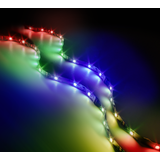

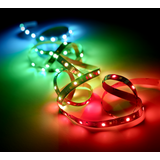
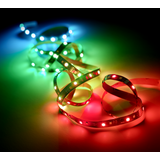

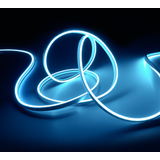
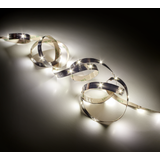
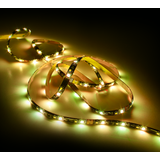

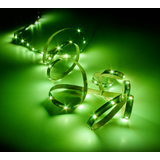


trio led strips and modules project context
Trio solutions fit standard 12/24 V DC ecosystems used by shopfitting and hospitality contractors. You’ll find 2700–6500 K whites, RGB/RGBW, and tunable-white options with CRI 90 available where colour fidelity matters. Typical reels ship in 5 m lengths, 8/10/12 mm tape widths, with cut points every 25–100 mm. Pair with constant-voltage LED drivers (IEC 61347-2-13) and follow EN 62031 and EN 60598 wiring clearances in profiles and cabinets. For long runs, keep voltage drop under 3 % and feed from both ends. In day-to-day quotes we tag reels, drivers, and profiles together so sites receive a workable kit, not loose parts—ideal when specifying trio led strips and modules for multi-room rollouts.
trio flexible led strips range and reel formats
The flexible lineup spans ~4–22 W/m, 300–2 000 lm/m, with efficacy up to 120–140 lm/W on CRI 80 and ~100–110 lm/W on CRI 90. IP20 indoor and potted IP65/IP67 outdoor options cover coves, soffits, and damp zones. Look for 2/3-step MacAdam binning, 3-oz copper for lower drop on longer feeds, and adhesive rated ≥100 °C short-term to survive aluminium channel heating. Where acoustics matter, low-PWM or high-frequency dimming drivers keep flicker out of camera footage. Many installers standardise one CCT and one high-CRI reel so spares remain simple across floors, which suits projects calling for trio flexible led strips with repeatable photometrics.
trio linear led modules options for fixtures
Rigid linear boards in 280–560 mm lengths support task lighting and display cases. Expect 700–1 400 mA drive currents (constant-current), quick-connect terminals, and thermal vias for better heat spread into the base. Specify LM-80/TM-21 validated LEDs, R9 > 50 for retail reds, and UGR-friendly diffusers when the board is visible. If retrofitting, check mounting hole patterns and optical heights against your bezel or lens; a 1–2 mm standoff often fixes hotspotting. For tender clarity we note forward voltage windows and keep driver headroom at 15–20 % when planning trio linear led modules into continuous rows.
trio led profiles thermal and optical design
Aluminium channels (6063-T5) act as the heatsink and glare control. A 1 m open-air thermal resistance of ~8–12 °C/W suits 10–12 W/m; for ≥16 W/m move to deep or surface-mass profiles. Opal diffusers smooth dotting above 120 LED/m; clear diffusers maximise lm/W. IK07-rated covers help in retail back-of-house. Leave ~2 mm venting at ends to avoid condensation in cold-store runs. For EMC hygiene, clamp strip screens and driver earths to the profile where applicable—good practice with trio led profiles in long corridors.
trio aluminium profiles applications and diffusion choices
Surface, recessed, corner, and trimless channels arrive in 1–2.5 m bars with snap-in lenses. Corner profiles (30×30 mm class) push light onto verticals, useful for perimeter wash. Trimless versions set into plasterboard for clean sightlines; agree on plaster bead widths early with drywall crews. Outdoors, IP65 gaskets and stainless A2 clips prevent creep. We often pre-cut and cap bars to room sizes and label bundles by riser, which speeds fit-out when deploying trio aluminium profiles in multiples.
trio led lighting accessories integration and cabling
Inline amplifiers, RGB/W controllers, repeaters, corner connectors, and pre-moulded leads keep assembly time down. Use 2×1.5 mm² for runs above 8–10 m at 24 V; step to 2.5 mm² for high-load coves. Push-in terminals accept 0.5–1.5 mm²; strain-relief is mandatory at moving joints. For control, DALI-2 DT8 or 0–10 V drivers handle tunable-white; SPI/DMX512 sits behind gateways. We catalogue BOMs so the same adaptors and end-caps repeat across floors, aligning with trio led lighting accessories already approved on your spec.
trio mounting profiles and kits selection guidance
Clips, brackets, spring tabs, and end-caps arrive as matched sets. For recessed lines, confirm cut-out width/height to ±0.5 mm; mis-sized slots cause diffuser chatter. Suspension kits with 1.5 mm wire and grippers rated ≥5 kg per point suit linear pendants; always check ceiling substrate. On humid sites, anodised finishes beat powder coat for longevity. We keep mirrored part numbers for left/right corners, so replacements slot in without re-drilling—handy when the scope lists trio mounting profiles and kits for dozens of rooms.
Product range and series overview
Common tape families: high-density uniform (≥180 LED/m) for direct view, high-output (16–22 W/m) for coves ≥300 lux, economy (8–10 W/m) for guidance lines, plus RGB/RGBW with 4/5-channel control. Rigid bars fill under-shelf and cabinet tasks where straightness matters. Accessory sets cover joiners, flex bridges, and corner PCBs to keep bend radii compliant.
Technical specifications and standards
Electrical: 12/24 V DC strips; constant-current boards 150–1 400 mA. Photometric: CRI 80/90, R9 options, SDCM ≤ 3, CCT 2200–6500 K, TM-30 data on request. Protection: IP20/IP65/IP67; IK per profile and lens. Compliance: EN 62031 (LED modules), EN 61347-1/-2-13 (drivers), EN 55015/EN 61547 (EMC/immunity), EN 62471 (photobiological). Thermal: operate −20…+45 °C typical; de-rate above 35 °C in sealed profiles. Dimming: DALI-2, 0–10 V, PWM; keep PWM ≥1.5 kHz for camera-safe areas.
Applications and compatibility
Retail coves, hotel headboards, museum plinths, refrigerated displays (with IP67 tape and neutral-cure silicone), and façade accents using encapsulated channels. Drivers sit in accessible voids; emergency through-wiring uses maintained drivers on selected circuits. Control integrates with BACnet/Modbus via lighting gateways where whole-building logic is required.
Integration with other Trio products
Match optics and CCTs to Trio downlights and linear luminaires for uniform scenes; we keep bin codes aligned across orders. Track-mounted displays often use the same CCT families, so visuals stay consistent. For exterior canopies, pair IP67 tape with Trio bollards and wall packs to keep maintenance kits unified.
Selection criteria for B2B clients
- Target illuminance and beam appearance, then pick tape density/output. 2) Choose profile by thermal mass and sightline; opal vs clear affects lm/W and pixelation. 3) Fix driver topology and control (DALI-2/0–10 V/DMX). 4) Validate run lengths vs drop; plan feeds at ≤5 m intervals for high-load strips. 5) Lock accessories: connectors, corners, and cable gauges. 6) Define service spares—one reel, one driver, one lens type per zone—so night swaps don’t disturb scenes.
Advantages of working with Bankoflamps
Project pricing is set per package, not per item, and our quoting desk returns EAN/MPN-based offers in about an hour. You see live EU stock, lead-time windows, and downloadable price lists with validity dates you can schedule against. A named account manager checks kW/W-per-metre budgets, driver loads, IP/IK choices, cut-point arithmetic, and diffuser selections against drawings before we ship. We consolidate partials so drivers, reels, profiles, diffusers, and kits arrive room-bundled, with tracking and status updates visible in the portal. Trusted partners can place orders on post-payment terms up to 30 days. Our logistics currently support France, the Baltics, Germany, Spain, Italy, Belgium, and the Netherlands.